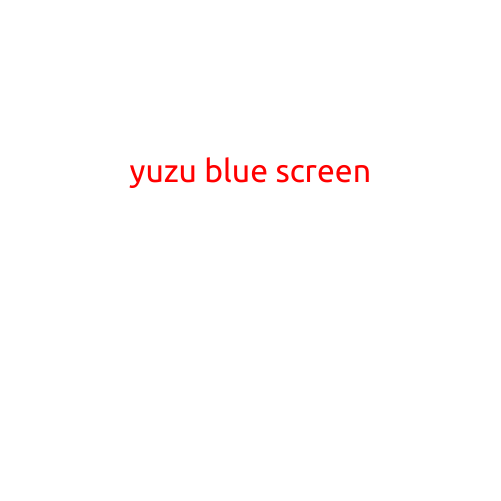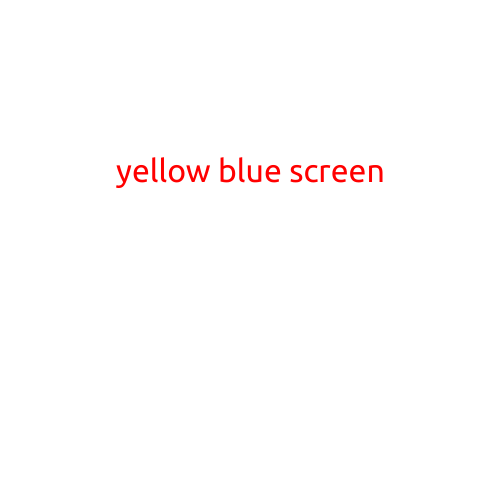
Yuzu Blue Screen: The Frustrating Issue Plaguing Citrus Lovers
If you’re an avid user of the Yuzu citrus fruit, you might have encountered a frustrating issue that’s been plaguing citrus enthusiasts worldwide - the Yuzu Blue Screen. In this article, we’ll dive into the causes, symptoms, and possible solutions for this intriguing problem.
What is the Yuzu Blue Screen?
The Yuzu Blue Screen refers to a rare and mysterious phenomenon where the skin of a Yuzu fruit turns a deep blue color, typically on one or more sides. This discoloration is usually accompanied by a faint blue-gray tinge on the fruit’s flesh. The affected area may also become softer and more prone to bruising.
Causes of the Yuzu Blue Screen
While the exact cause of the Yuzu Blue Screen is still unknown, researchers have identified several factors that may contribute to its occurrence:
- Ethylene production: Yuzu fruits, like many other citrus varieties, produce ethylene gas as they mature. High levels of ethylene can cause the fruit to ripen more rapidly, leading to the blue discoloration.
- Oxygen depletion: Yuzu fruits growing near the surface or in well-draining soil may experience reduced oxygen levels, which can affect the fruit’s color and texture.
- Temperature fluctuations: Exposure to sudden changes in temperature, such as during transportation or storage, can stress the Yuzu fruit and cause the blue discoloration.
- Genetic predisposition: Some Yuzu varieties may be more prone to the Blue Screen due to their genetic makeup.
Symptoms and Diagnosis
To diagnose the Yuzu Blue Screen, farmers and citrus enthusiasts should look for the following symptoms:
- Deep blue discoloration on one or more sides of the fruit
- Faint blue-gray tinge on the flesh
- Softening of the affected area
- Increased susceptibility to bruising
Solutions and Prevention
While there is currently no cure for the Yuzu Blue Screen, here are some strategies to reduce the risk of encountering this issue:
- Monitor temperature fluctuations: Ensure Yuzu fruits are stored at a consistent temperature between 32°F and 50°F (0°C and 10°C) to minimize stress.
- Maintain optimal O2 levels: Provide Yuzu trees with well-draining soil and sufficient oxygen levels to reduce the risk of oxygen depletion.
- Use ethylene inhibitors: Apply ethylene inhibitors, such as ethylene-absorbing products or calcium carbide, to slow down the ripening process and reduce the likelihood of the Blue Screen.
- Choose disease-resistant varieties: Opt for Yuzu varieties that are known to be more resistant to the Blue Screen, such as ‘Taikan’ or ‘Miyasaura’.
Conclusion
The Yuzu Blue Screen is a fascinating and frustrating issue that has puzzled citrus enthusiasts for years. By understanding the possible causes, symptoms, and prevention strategies, farmers and citrus enthusiasts can take steps to reduce the risk of encountering this problem. With continued research and experimentation, we hope to uncover the underlying causes of this phenomenon and find a more effective solution to mitigate its effects. For now, it’s essential to monitor Yuzu fruits closely and take proactive measures to ensure the quality and integrity of this beloved citrus fruit.





